The Boo Radleys are an English alternative rock band who were associated with the shoegazing and Britpop movements in the 1990s. They originally formed in Wallasey, England, in 1988, with singer/guitarist Simon "Sice" Rowbottom, guitarist/songwriter Martin Carr, and bassist Tim Brown. Their name is taken from the character Boo Radley in Harper Lee's 1960 novel, To Kill a Mockingbird. The band split up in 1999.

Loveless is the second studio album by the Irish-English rock band My Bloody Valentine. It was released on 4 November 1991 in the United Kingdom by Creation Records and in the United States by Sire Records. The album was recorded between February 1989 and September 1991, with vocalist and guitarist Kevin Shields leading sessions and experimenting with guitar vibrato, non standard tunings, digital sampling, and meticulous production methods. The band recorded at nineteen different studios and hired several engineers during the album's prolonged recording, with its final production cost rumoured to have reached £250,000.

Creation Records Ltd. was a British independent record label founded in 1983 by Alan McGee, Dick Green, and Joe Foster. Its name came from the 1960s band The Creation, whom McGee greatly admired. The label ceased operations in 1999, although it was revived at one point in 2011 for the release of the compilation album Upside Down.

Alan John McGee is a Scottish businessman and music industry executive. He has been a record label owner, musician, manager, and music blogger for The Guardian. He co-founded the independent Creation Records label, running it from 1983 until its closure in 1999.
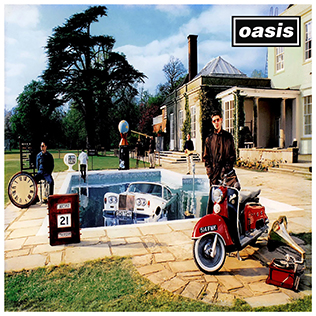
Be Here Now is the third studio album by the English rock band Oasis, released on 21 August 1997 by Creation Records. The album was recorded at multiple recording studios in London, including Abbey Road Studios, as well as Ridge Farm Studio in Surrey. Although most tracks retain the anthemic quality of previous releases, the songs on Be Here Now are longer and contain many guitar overdubs. Noel Gallagher said this was done to make the album sound as "colossal" as possible. The album cover features a shot of the band members at Stocks House in Hertfordshire. It is the last Oasis studio album to feature founding members guitarist Paul "Bonehead" Arthurs and bassist Paul "Guigsy" McGuigan as the two left in 1999.
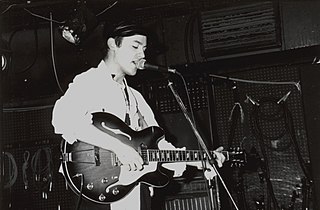
The Television Personalities are an English post-punk band formed in 1977 by London singer-songwriter Dan Treacy. Their varied, volatile and long career encompasses post-punk, neo-psychedelia and indie pop; the only constant being Treacy's songwriting. Present and former members include Chelsea childhood mates 'Slaughter Joe' Joe Foster, one-time best friend Ed Ball and Jowe Head, with Jeffrey Bloom from 1983 to 1994. The threesome of Treacy, Head, and Bloom formed the longest unchanged line-up and as a result is considered by many to be the definitive line-up, performing hundreds of gigs around the world and recording many of the band's most popular songs like "How I Learned to Love the Bomb", "Salvador Dali's Garden Party" and "Strangely Beautiful". Despite this, the Television Personalities are best known for their early single "Part Time Punks", a favourite of John Peel.
Martin Carr is an English musician and writer who was the chief songwriter and lead guitarist with the band The Boo Radleys. Born in Thurso, Scotland, he was raised in Wallasey, England.
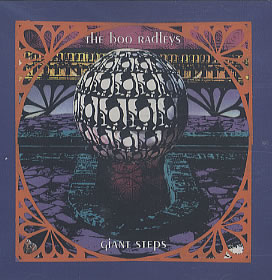
Giant Steps is the third studio album by the Boo Radleys, released in 1993. The title is inspired by John Coltrane's album of the same name, and the record features an assortment of influences — their previous shoegazing sound backed by pop, reggae, noise pop and orchestral sounds.

Everything's Alright Forever is the second album by English indie rock band the Boo Radleys, released in 1992. The title is taken from The Dharma Bums by Jack Kerouac.

C'mon Kids is the fifth album by the Boo Radleys, released in September 1996. The album is considered to be purposely difficult and uncommercial. The band were said to have wanted to distance themselves from the commercial image they had cultivated because of the unexpected successes of the album Wake Up! and their top ten hit single "Wake Up Boo!". However, this was not the intention of the band, as explained by Sice in an interview in 2005:

Kingsize is the sixth album by the Boo Radleys, released in 1998. The band broke up shortly after the album's release.

Ichabod and I is the debut album by British indie rock band The Boo Radleys, released in 1990 on the indie label Action Records. It has never been released on CD. Steve Hewitt, the drummer for this album, would later join Placebo.

Learning to Walk is a compilation album by UK indie band The Boo Radleys, released by Rough Trade Records in 1992.

Do It Yourself is a 1979 album by Ian Dury & the Blockheads. It was the first album to be credited to Ian Dury & the Blockheads rather than Ian Dury alone, although Dury had used the full band name for the "What a Waste" 7" single of 1978. The album was released in the wake of the chart-topping hit single "Hit Me with Your Rhythm Stick", and reached number two in the charts, behind ABBA's Voulez-Vous. Do It Yourself sold around 200,000 copies, and was Dury's second Platinum album.
Shine was a various artists compilation album series released by PolyGram TV in Britain from 1995 to 1998, centring on indie rock, largely from new British bands. The series began in 1995 to capitalize on the Britpop scene. In total, there were ten Shine albums, plus a 'Best of '97' compilation and a final 'Best of Shine' in 1998. The series ended in the late 1990s as the Britpop era passed.
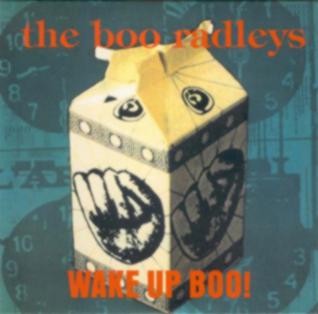
"Wake Up Boo!" is a song recorded by British indie band the Boo Radleys for their fourth album, Wake Up! (1995). Released in February 1995 by Creation Records, it was by far their biggest hit both in the UK and internationally. The track, written by Martin Carr, is an upbeat guitar-pop song about the change from summer to autumn, contrasting the narrator's optimism with his companion's pessimism. Part of the song was used as a jingle by Chris Evans for his BBC Radio 1 breakfast show in the mid nineties.
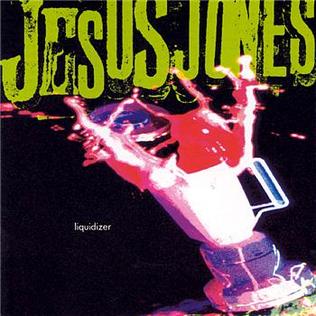
Liquidizer is the debut album by British rock band Jesus Jones, released in October 1989 through Food Records. After various line-up changes, the members of the band moved to London, where frontman Mike Edwards would diversify his musical tastes. Guitarist Jerry de Borg joined soon after; in May 1988, Edwards acquired a sampler which would further his songwriting. With the addition of keyboardist Iain Baker, the band signed to Food Records by the end of the year. Initially enthusiastic about working with producer David Motion, recording sessions with him were fruitless. Craig Leon then produced Liquidizer in mid-1989, helping to give the album its signature tone, though the members would later be disappointed by the mixing.

Teenage Fanclub Have Lost It is an EP by Scottish alternative rock band Teenage Fanclub, released in December 1995 on Creation Records. It reached #53 in the UK singles chart.

Keep on with Falling is a 2022 studio album by British alternative rock band The Boo Radleys. It is their first studio release in 24 years and their first as a trio.

Eight is a 2023 studio album by British alternative rock band The Boo Radleys.

















